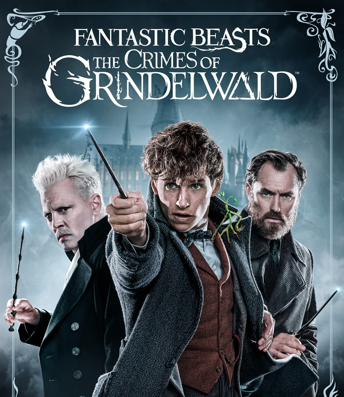
Finished this project Render Wrangling for Framestore (https://www NULL.framestore NULL.com/) in 2018.

Finished this project Render Wrangling for Framestore (https://www NULL.framestore NULL.com/) in 2018.
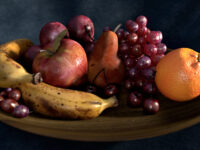
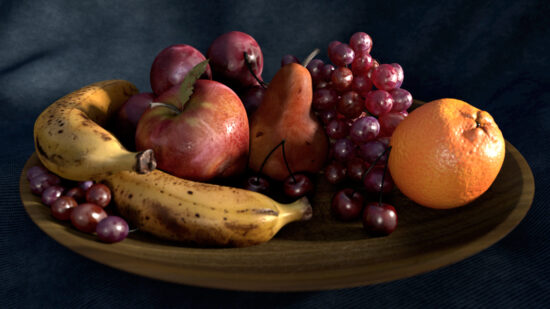 (http://www NULL.terrymatthes NULL.com/wp-content/uploads/2018/08/CGChallengeOne NULL.jpg)
(http://www NULL.terrymatthes NULL.com/wp-content/uploads/2018/08/CGChallengeOne NULL.jpg)
The models for everything in the scene were taken from 3DRender.com as part of their Lighting Challenge #1. I wanted to visit this challenge once more as a test of the free Renderman render plugin for Maya. The challenge is that you are given the 3D models to work with and your job is to texture, light and render the scene. Choice of lens and camera position are left up to the individual. I thought the plugin was fairly easy to work with and had a decent realtime render mode via CPU.
The photographs were taken in a lightbox using a camera mounted above it facing downwards.
I constructed the light box from white posterboard. The box itself was facing with the open side upwards. Then the camera straddled the box and the camera was underneath the tripod to shoot straight down. These are some samples of the raw shots
I later brought shots like these into Photoshop to remove an strong lighting info. I had one small setback when I was editing the photos. They had more grain than I anticipated, and it made it a little more difficult to fix some of the lighting info. Overall I was really happy with the results.
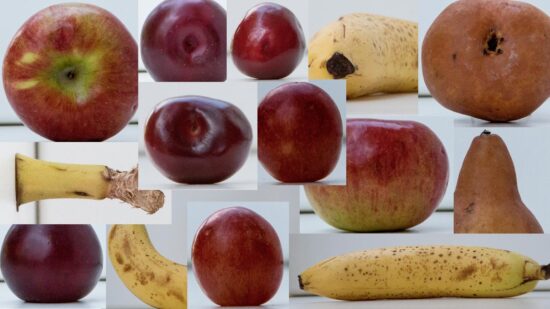 (http://www NULL.terrymatthes NULL.com/wp-content/uploads/2018/09/fruitcollage NULL.jpg)
(http://www NULL.terrymatthes NULL.com/wp-content/uploads/2018/09/fruitcollage NULL.jpg)
The majority of the shapes are spherical in nature, so the UVs followed and were produced with spherical projections. I did want to try something different on the banana though. I cut the bananas along their natural edges and then squished them out of the peel. After the peel was flattened I snapped a shot. Later on in Maya I formed the UVs around the image. The bananas turned out great and I feel this was a big part of why.
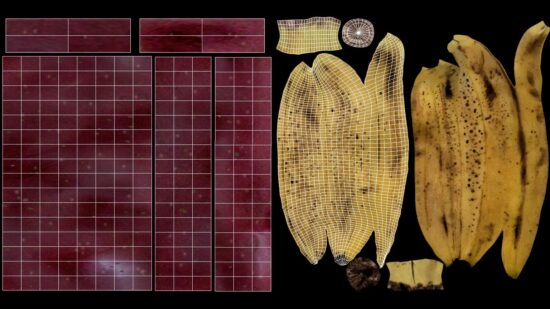 (http://www NULL.terrymatthes NULL.com/wp-content/uploads/2018/09/fruituvs NULL.jpg)
(http://www NULL.terrymatthes NULL.com/wp-content/uploads/2018/09/fruituvs NULL.jpg)
ZBrush is always fun to work in. I think that’s one of the programs big wins. Before Substance Painter came along it was a great way (and still is) to get your assets textured. Being able to resample areas of textures to stamp using Spotlight feels awesome. It lets you mix and match details from several different photos with ease. Painting your objects in 3D is such a liberating feeling when compared to painting in 2D.
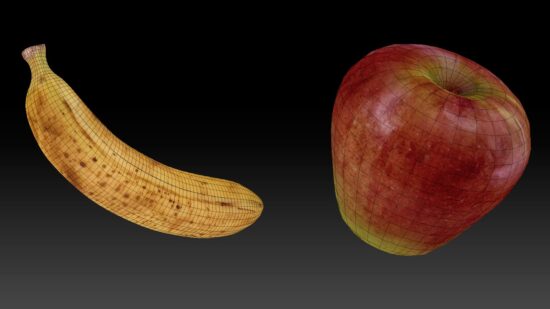 (http://www NULL.terrymatthes NULL.com/wp-content/uploads/2018/09/fruitZbrush NULL.jpg)
(http://www NULL.terrymatthes NULL.com/wp-content/uploads/2018/09/fruitZbrush NULL.jpg)
There are two spotlights in the scene the key light is on the far right. It’s pushing through a large light blocker with a windows shape punched out. The fill light coming from the left of the photos is doing it’s job of pulling the shadows up so they appear softer. The surfacing of the fruit was easier to do in Renderman than previous render plugins. I found that the ability to control the second specular lobe made a huge difference. Although it isn’t necessarily physically correct that doesn’t matter in this instance. The interactive rendering you can do with even just your CPU for Renderman is pretty good. The one thing that really superised me with Renderman was the render settings you have to play with. Compared to Vray, or really any other render plugin out there it’s fantastic. There are a few confusing things like the colour you get when using Sub Surface Shading, but it is explained in the online documentation.
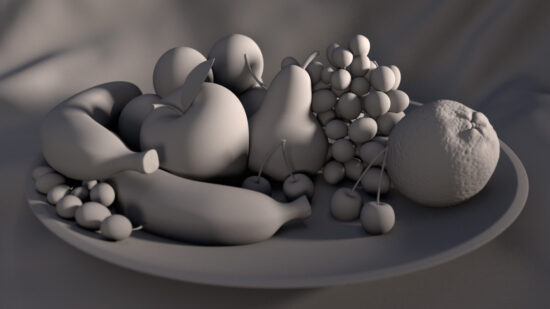 (http://www NULL.terrymatthes NULL.com/wp-content/uploads/2018/09/lightingFruit NULL.jpg)
(http://www NULL.terrymatthes NULL.com/wp-content/uploads/2018/09/lightingFruit NULL.jpg)
Overall I would recommend RenderMan to anyone who wants to free their artistic mind and get away from being bogged down with technical details.
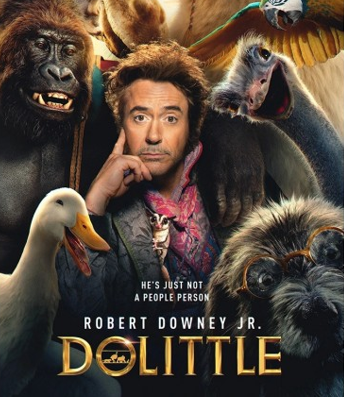
Finished this project as a Render Wrangler for Framestore (https://www NULL.framestore NULL.com/) in 2019
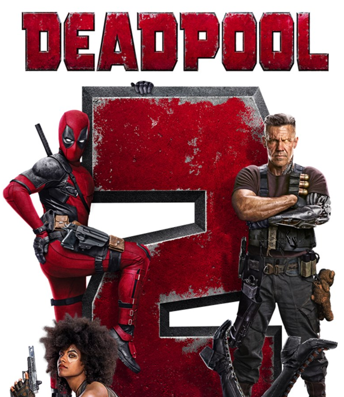
Finished this project Render Wrangling for Framestore (https://www NULL.framestore NULL.com/) in 2018.
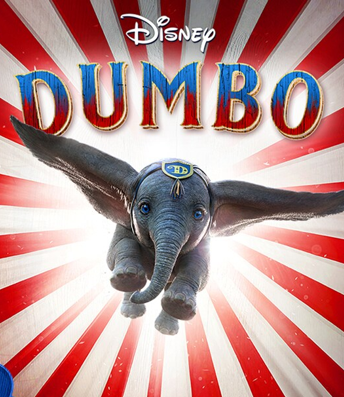
Finished this project Render Wrangling for Framestore (https://www NULL.framestore NULL.com/) in 2018.
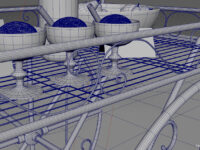
I’ve started a new piece to ring in the new year and with it comes some fun stuff to learn. I was searching for a nice scene to model when I came across a shot (bottom of post) on Pinterest courtesy of https://ruffledblog.com/ (https://ruffledblog NULL.com/). Below are shots of the first modeling pass. When putting a scene together I like to follow the order of: model, light, texture, render. I’ve roughed in several of the models so far and have one of the two types of flowers complete. Everything in the scene is pretty straight forward with the flowers and vines taking up the bulk of the time. The filigred steel around the cart was done by drawing out CV curves and then extruding a nurbs circle along their path. After the extrusion is complete I convert the nurbs tube to a polygon and then model a cap on each end.
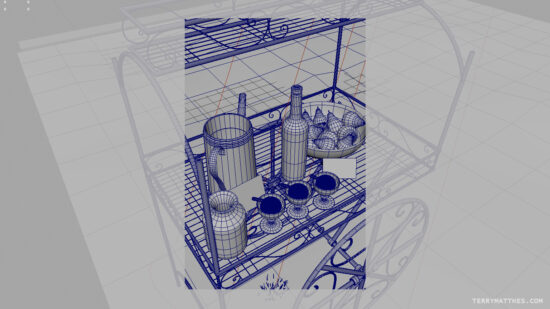 (http://www NULL.terrymatthes NULL.com/wp-content/uploads/2018/01/WineCartModelShotA NULL.jpg)
(http://www NULL.terrymatthes NULL.com/wp-content/uploads/2018/01/WineCartModelShotA NULL.jpg)
The icecream was an interesting surface to try and capture. I ended up stumbling on a technique by Andre Caputo (https://www NULL.youtube NULL.com/watch?v=5hqBqzncVdw&t=48s) on Youtube for Modo. There is nothing special about the tools used to achieve the final goal so I was able to copy the technique in ZBrush. I’m not entirely happy with my results on the first pass so I will do another when time permits.
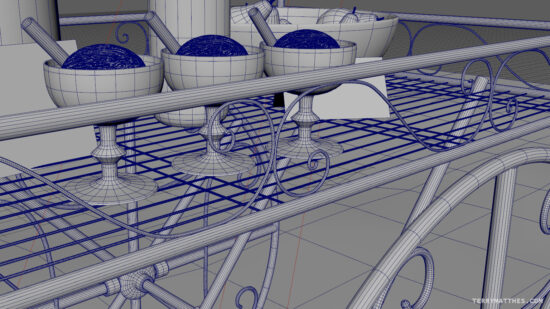 (http://www NULL.terrymatthes NULL.com/wp-content/uploads/2018/01/WineCartModelShotD NULL.jpg)
(http://www NULL.terrymatthes NULL.com/wp-content/uploads/2018/01/WineCartModelShotD NULL.jpg)
The scene I chose has grass covering the ground and I’ve honestly never scattered objects in Maya. To achieve the scattering of the grass across the shot I used Maya’s system MASH (https://knowledge NULL.autodesk NULL.com/support/maya/learn-explore/caas/CloudHelp/cloudhelp/2016/ENU/Maya/files/GUID-5F45C398-D87D-424E-9F00-51D9FAB5A40B-htm NULL.html). I was really impressed by how fast and easy it was to get things up and running. I modeled a single patch of grass and then wrote some simple expressions in MASH to vary the size and positioning. I know as soon as a lot of you read “expression” you freak out and think “this is beyond me”. It’s not! A friend of mine pointed me to a simple primer and within 30 minutes I had things up and running. If you want the full rundown of MASH (of course you do) check out this tutorial (https://www NULL.youtube NULL.com/watch?v=6a7303eCTHI). It’s long, but thorough. For my purposes the grass I created should be a little lower poly, but as a first pass it will do.
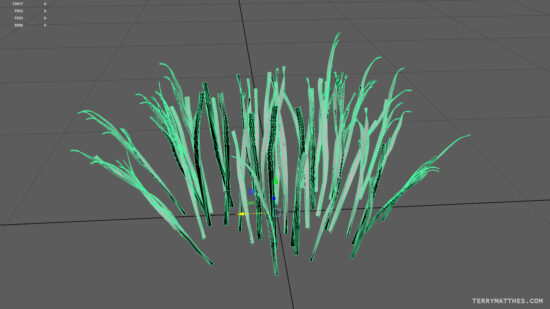 (http://www NULL.terrymatthes NULL.com/wp-content/uploads/2018/01/WineCartModelShotC NULL.jpg)
(http://www NULL.terrymatthes NULL.com/wp-content/uploads/2018/01/WineCartModelShotC NULL.jpg)
I always like modeling objects from nature as I find the process both creative and freeing. When modeling mechanical objects you can really get hung up on your reference. I find this isn’t the case with a lot of organic assets. The flowers in the scene are Freesia (https://en NULL.wikipedia NULL.org/wiki/Freesia). There is also a yellow flower which I have yet to identify. I’ve modeled four different variations of the Freesia and that should be more than enough. My next step is to place them in the scene. As far as the stems go I’m going to wait until I have the placement of the flowers finalized then I will create the stems. This way I can have a single stem run up to several flowers. If I was to do this in reverse I would have to remodel the stems every time I changed the placement of the flower heads.
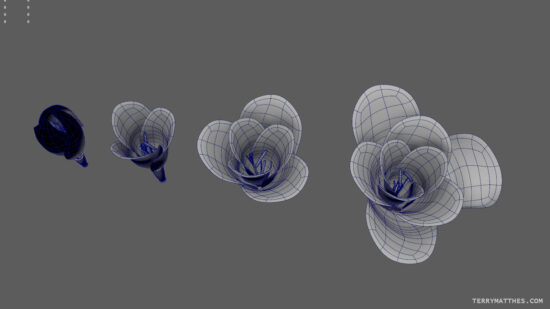 (http://www NULL.terrymatthes NULL.com/wp-content/uploads/2018/01/WineCartModelShotB NULL.jpg)
(http://www NULL.terrymatthes NULL.com/wp-content/uploads/2018/01/WineCartModelShotB NULL.jpg)
The end goal of this project is just to be a still shot, I’m not planning any animation. If I was to add any it would be a simple camera push. I’ve got a VRay sun node lighting the scene which is a nice change due to its simplicity. My last scene was indoors and had many many lights of varying temperatures and types. Below are two of the shots I found on https://ruffledblog.com/ (https://ruffledblog NULL.com/) that I’m basing the scene on. I’m about two thirds of the way done the modeling and when I finish I will make a follow up post. As always if you have any questions don’t be afraid to ask as I love to help others when I can :)
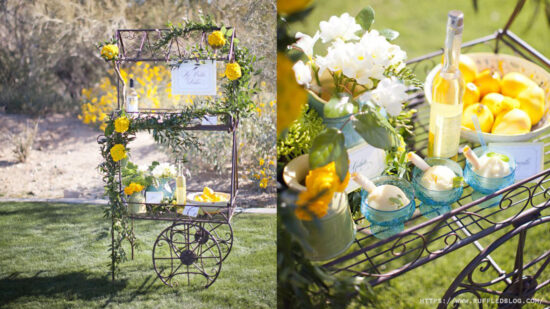 (http://www NULL.terrymatthes NULL.com/wp-content/uploads/2018/01/WineCartModelShotE NULL.jpg)
(http://www NULL.terrymatthes NULL.com/wp-content/uploads/2018/01/WineCartModelShotE NULL.jpg)
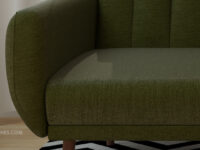
The couch was the focus in this scene for me. It was part of a small contract for Wayfair. Their 3D Generalist broke his arm while on vacation and they needed a CG model made of their Novagratz Brittany Sofa. I was given photos of the couch and asked to model and surface it for their web catalogue. I used Maya to create a stub mesh with proper dimensions then took everything into Zbrush to be sculpted. The rest of the meshes were purchased off of Turbo Squid. I then created the materials for all objects in the scene. The last steps were to light, render and finally composite the scene in Nuke. I rendered the scene using Vray. Almost all of my previous modeling was done by creating a scale stub in Maya and then working it out in ZBrush. 3DSMax is a different beast altogether when it comes to modeling. Thankfully VRay seems to work in a similar fashion from within 3DSMax as it does in Maya. I still don’t quite understand the new ‘Slate Material Editor’. It seems that materials I create from within the Slate editor don’t show up in the Compact editor and vice versa. Most of my shaders don’t require crazy node networks so I’m happy using the simplified editor.
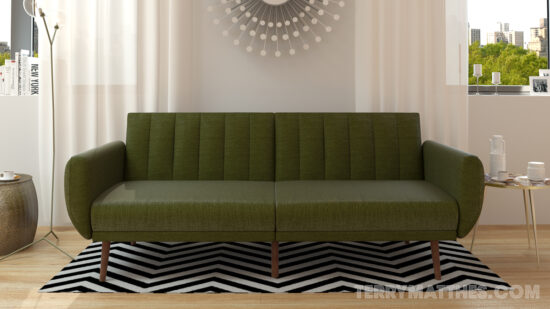 (http://www NULL.terrymatthes NULL.com/wp-content/uploads/2018/01/LoftInterior_Web2 NULL.jpg)
(http://www NULL.terrymatthes NULL.com/wp-content/uploads/2018/01/LoftInterior_Web2 NULL.jpg)
A lot of the time developing this scene was spent on the couch’s material. I wanted to make sure the linen came through really strong and crisp. Rendering the couch without losing the detail in the bump was my main concern. I ran with a 4K diffuse map and a 4K bump map to create most of the detail in the material. A spec map was also used to control how the highlight spread over the couch’s surface. The raw render is 4000×2666. Below is detailed snipped of the full resolution render.
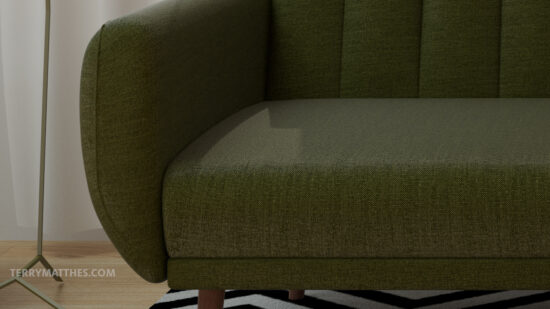 (http://www NULL.terrymatthes NULL.com/wp-content/uploads/2017/07/detail NULL.jpg)
(http://www NULL.terrymatthes NULL.com/wp-content/uploads/2017/07/detail NULL.jpg)
Most of the folds and creases in the couch were created in ZBrush. I didn’t want to add too much wear and tear to the couch as it was designed for use in a product shot. Usually I would render out a default material pass to show the shapes in the scene, but this Global Illumination pass does a fine job.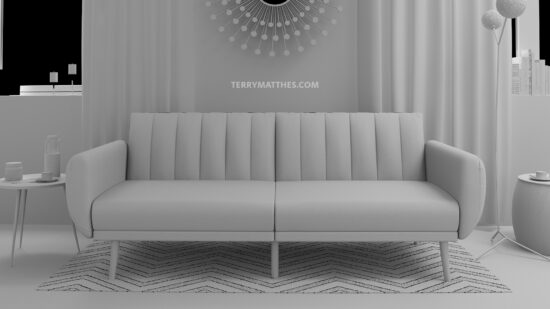 (http://www NULL.terrymatthes NULL.com/wp-content/uploads/2017/07/couch1920GI NULL.jpg)
(http://www NULL.terrymatthes NULL.com/wp-content/uploads/2017/07/couch1920GI NULL.jpg)
I haven’t had a chance to use the UVW pass on this shot, but I would like to play around with it in the future. The idea of being able to assign a new texture to the couch in post sounds really cool. I think it could have some really useful implications for product rendering. I’ve been thinking more and more about exteriors lately and I think I might try to model an outside scene in the near future. For now I’ll leave you with render passes created in 3DSMax for Nuke below.
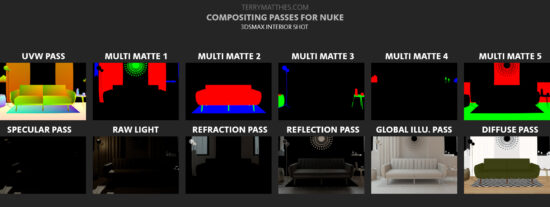 (http://www NULL.terrymatthes NULL.com/wp-content/uploads/2017/07/NukeCouchPasses NULL.jpg)
(http://www NULL.terrymatthes NULL.com/wp-content/uploads/2017/07/NukeCouchPasses NULL.jpg)
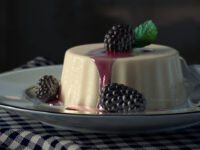
Food is something I’ve wanted to render for a while. It seemed like a good rendering challenge given how familiar people are with the look of food. When I think of what really sells an object in a scene as “real” it’s the surface detail. I could have used displacement textures to refine the surface detail, but in this case I modeled the surface detail. I find modeling almost always gives a faster rendering result. Displacement takes a long time to calculate and on top of that you’re going to need a large resolution displacement material to get good results again adding to the render times.
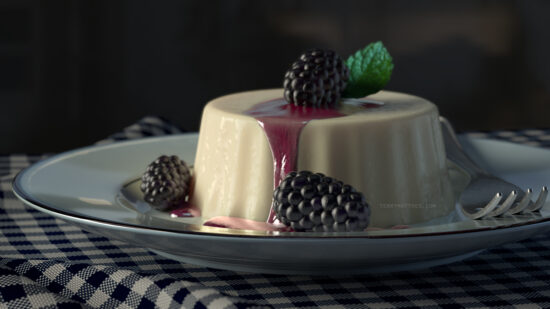 (http://www NULL.terrymatthes NULL.com/wp-content/uploads/2016/12/Panacotta1280 NULL.jpg)
(http://www NULL.terrymatthes NULL.com/wp-content/uploads/2016/12/Panacotta1280 NULL.jpg)
Even with a model that’s a quarter of a million polygons its still faster to render the result. The base shape of the panacotta was made in Maya to scale in cm then brought into ZBrush. In ZBrush I added some generic noise as a base using ‘surface noise’. I then went in with the ‘Dam standard’ brush and added some extra pitting to the surface. Finally I went over some of the edges with the ‘Trim dynamic’ brush to give the appearance of scraping or tearing where the dessert would have contacted the mold as it was popped out.
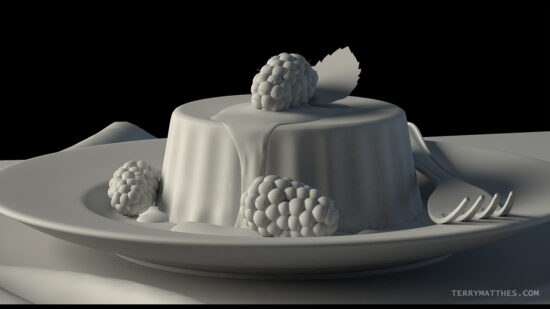 (http://www NULL.terrymatthes NULL.com/wp-content/uploads/2016/12/Panacotta_Grey NULL.jpg)
(http://www NULL.terrymatthes NULL.com/wp-content/uploads/2016/12/Panacotta_Grey NULL.jpg)
To create the blackberries I started in Maya. I made a bunch of polygon spheres and placed them in the basic shape with an interior shape that filled the gaps in between the spheres. This was then brought into Zbrush as an OBJ. Quickly after turning the mesh into a Dynamesh I used the ‘Nanomesh’ feature to drag hairs out of the berries faces.
Originally I had planned to create a fluid simulation for the sauce, but time did not permit. I instead drew a mask over the surface of the panacotta in ZBrush. I then used the ‘Extract‘ option to create a copy of the masked area. This was then sculpted into the sauce that lays over the dessert. The sauces on the plate were simple polygons modeled in Maya.
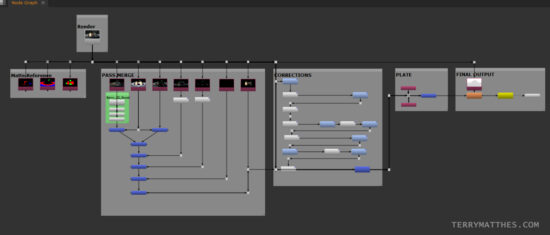 (http://www NULL.terrymatthes NULL.com/wp-content/uploads/2016/12/panacottaComp NULL.jpg)
(http://www NULL.terrymatthes NULL.com/wp-content/uploads/2016/12/panacottaComp NULL.jpg)
An unexpected challenge to this piece was the colour correction. From one device to the next the colour would vary quite a bit. With furniture and objects this isn’t as much of a problem as with food. The colour being too saturated can leave the food looking unappealing, too bright and it looks fake. In the end I tried to achieve a good balance between the two given the devices the final image was to be viewed on.
Below is a shot of my VRay passes from Maya. Nothing too crazy going on here. I should mention that this is the first time I’ve used ‘Raw’ passes in VRay. Specifically ‘Raw Global Illumination’ and ‘Raw Lighting’. I’m happy with the result. The compositing of those nodes varies slightly from traditional passes. They are merged with the ‘Diffuse pass’ using a ‘Merge’ node set to ‘Multiply’ rather than simply merging all the passes atop each other with Merge nodes set to ‘Plus’.
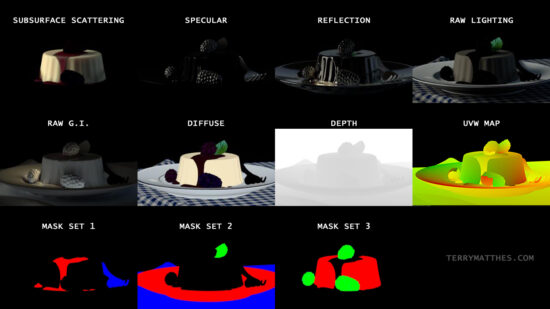 (http://www NULL.terrymatthes NULL.com/wp-content/uploads/2016/12/PanacottaPasses NULL.jpg)
(http://www NULL.terrymatthes NULL.com/wp-content/uploads/2016/12/PanacottaPasses NULL.jpg)
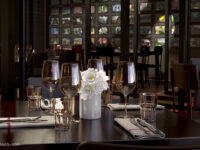
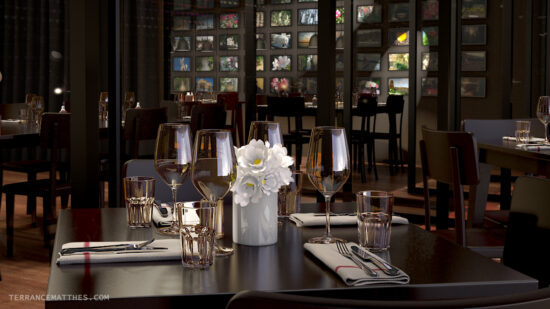 (http://www NULL.terrymatthes NULL.com/wp-content/uploads/2016/09/BrasserieB NULL.jpg)
(http://www NULL.terrymatthes NULL.com/wp-content/uploads/2016/09/BrasserieB NULL.jpg)
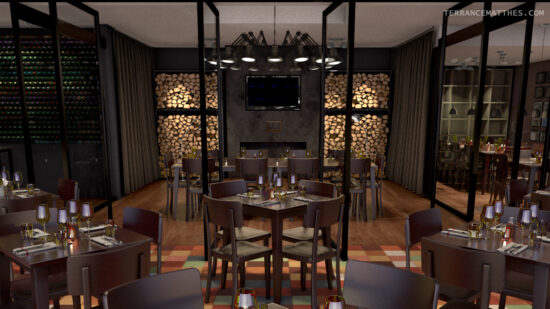 (http://www NULL.terrymatthes NULL.com/wp-content/uploads/2016/09/BrasserieA NULL.jpg)
(http://www NULL.terrymatthes NULL.com/wp-content/uploads/2016/09/BrasserieA NULL.jpg)
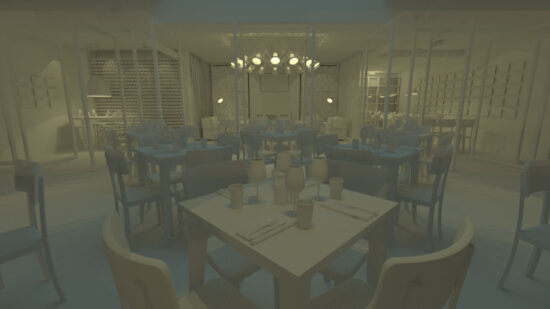 (http://www NULL.terrymatthes NULL.com/wp-content/uploads/2016/09/Brasserie3 NULL.jpg)
(http://www NULL.terrymatthes NULL.com/wp-content/uploads/2016/09/Brasserie3 NULL.jpg)
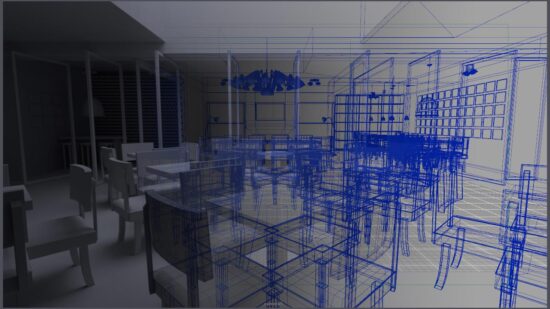 (http://www NULL.terrymatthes NULL.com/wp-content/uploads/2016/09/Brasserie1 NULL.jpg)
(http://www NULL.terrymatthes NULL.com/wp-content/uploads/2016/09/Brasserie1 NULL.jpg)